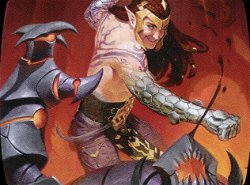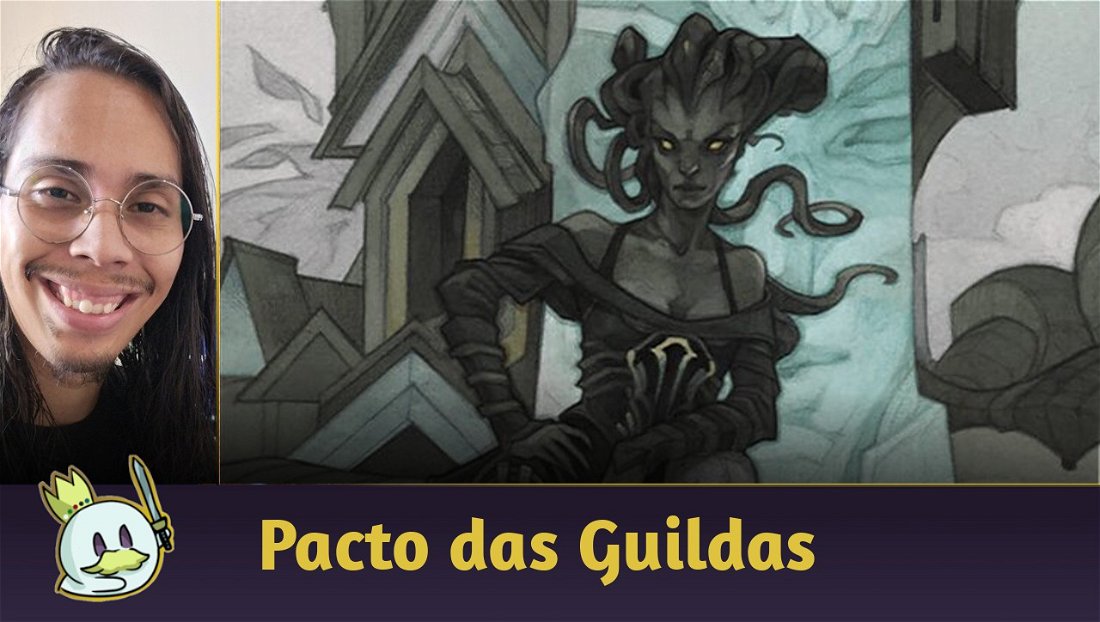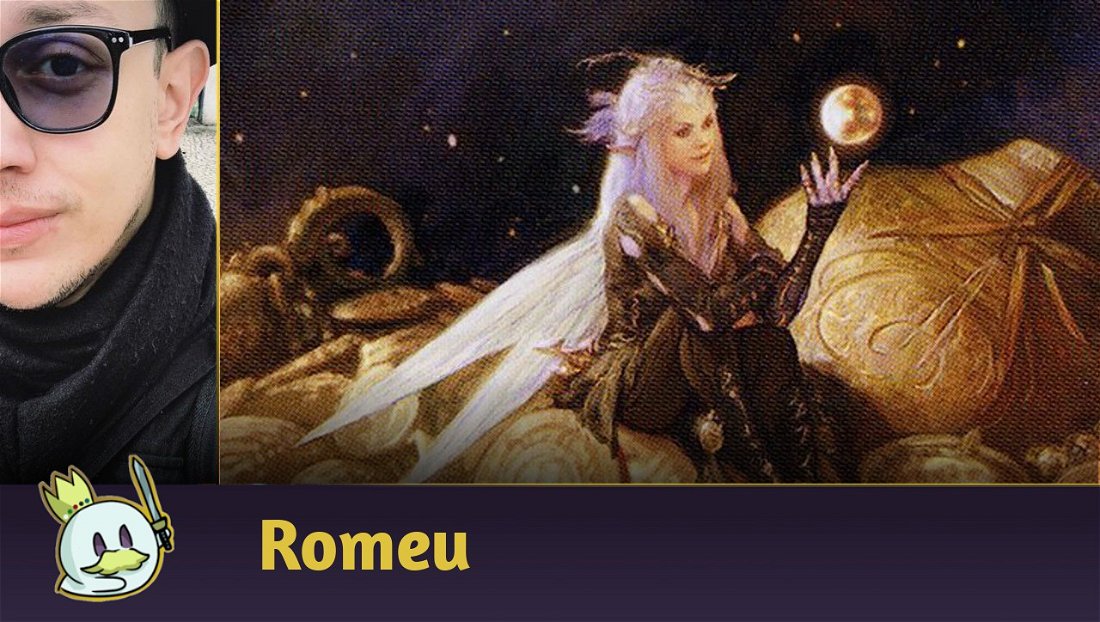Introduction
Living End is a true example of history and transformation in Magic: The Gathering. This strategy, which has existed in Modern for a very long time, was once a tier 2-3 deck, and in some moments even stood out. However, after this format changed (and MH2 came along), the deck changed too and, to this day, it has tried to find its place in the sun among other competitive decks.
That was the story until March 11th, when Violent Outburst was banned. Now, once again, Living End needs to reinvent itself.
History
If you're familiar with Modern since Modern Horizons 2, you'll certainly recognize the version of Living End that was basically a Temur 
Living End was born from the greatest combination this game has (which is almost extinct in Modern) - Jund 
Even in its Jund version, the Cycling mechanic made this list quite straightforward and even resilient (as long as your opponent didn't attack your graveyard). I had the pleasure of playing this deck in Modern exclusively for years. Its plan, which was "stall the game with land destruction and then cast Living End", was simple, but incredibly functional - at least in game 1 before graveyard hate came along.
You don't need to be the smartest player around to grasp just how much Modern Horizons 2 rotated (???) this format, but, in a way, it brought Living End to another level - now more resilient and with all the strength blue has to offer.
Main Deck
Let's get to the point and see the card that names today's deck:

The plan is simple: we'll "throw" (??? ou play??) our big creatures into our graveyard with abilities like Cycling. The list we used as an example comes straight from MeninoNey, a Brazilian player who has traditionally grinded Magic Online throughout the years:
We're in 2024, our Living End has been a Temur deck (with black), and, because Violent Outburst has been banned recently, now this deck is reinventing itself once again. It is now a Bant 

We use cards that recycle themselves. This means you'll discard the creature card in question (so it can return later) and draw a card (be careful with Orcish Bowmasters). Or, if we discard Generous Ent and Eagles of the North, we'll look for basic land (basic, shock, or surveil land) to fix our mana curve.
Then, in MH2, new creatures with Evoke came along to give us even more resources:

Evoke is exactly what we want: we'll pay their Evoke cost, the creature will enter play, we'll use its effect, and it will go to the graveyard so we can bring it back.
Don't forget about Grief's cost, which is 
Wait, but how do we cast Living End? It is even more simple:

(I hereby pay my respects to the recently banned Violent Outburst. You'll be missed!)
Cascade allows us to reveal the top of our deck until we find a nonland card whose mana value is less than the Cascading spell, which we'll be able to cast for free. Of course, Living End is the only card we can find this way. Then we'll be able to bring our army back to our board - and the challenge will be to keep it there.
At this point, you might have realized that, without our graveyard, our plan is to play heavy creatures that cost 4 or more - and I'm being optimistic when I call this a "plan". As a result, we need to be proactive. Here are a few cards to keep in mind:
Grief: We may bring this controversial Elemental on the same turn we'll play our combo, but in game 2 or 3 it may be even more cruel to our opponent because we'll use it to remove the graveyard hate they have in hand.
Force of Negation: What's better than countering something that is lethal to us without paying any mana?
Boseiju, Who Endures: This is a reactive card. We'll struggle with hate, but we can play around it, particularly with the safety an activated ability gives us. (??? revisar o original, tá muito confuso)
Otawara, Soaring City: With this card, we can both deal with hate and buy some time at the same time we deal with a threat (??? confusoooo). This is our greatest weapon against Teferi, Time Raveler.
Murders at Karlov Manor brought us surveil lands, whose potential was somewhat ignored by most players for some time (even by me). However, they turned out to be incredibly useful weapons, particularly for us, as we want creatures in our graveyard, or maybe even want to dig up the land we need (keep in mind we use a limited number of lands):

Sideboard

We must remember we'll constantly be looking for our combo, so a big part of our sideboard will be "hate for the hate" - ways we can deal with the hate we'll receive.
Leyline of the Void has become a great weapon to attack our opponent's graveyard without letting go of our entire game plan. It is useful both in the mirror and against any other deck that depends on the graveyard directly.
Mystical Dispute is great because it is a 1-mana counter. We'll use it any time we're facing counters ourselves, particularly when we're more likely to run into Teferi, Time Raveler. After all, we can't really remove him as easily.
Leyline of Sanctity is the best way to protect ourselves, particularly against Burn lists.
Damping Matrix will be a great ally against artifact decks, or opponents that can only access graveyard hate through artifacts or creatures (???).
Commandeer is an excellent option to surprise your opponent, particularly when they play a big threat like The One Ring or Primeval Titan.
As we've mentioned before, Evoke is incredible in this list, so Foundation Breaker makes sense. Furthermore, it is a great way to remove an artifact or enchantment.
Sideboard Guide
UR Murktide
Murktide will certainly bring graveyard hate, but not too many of them. We have to worry about their counters and try to play a sequence of Cascades. We'll play at sorcery speed (???), so we have to be more careful.
I wouldn't side in Leyline of the Void in this match because we want to stick to our game plan.
In

Out

Domain Rhinos
Rhinos has also been reinventing itself after Violent Outburst was banned. I believe the Domain version will eventually stabilize.
So, we have to protect our Living End from counters and hold off Scion of Draco, which may impose a really fast clock on us.
In

Out

Boros Burn
I really like playing this match because it flows very naturally.
Our plan is as simple as it looks: we'll race them and try to get ahead any time we can.
We need to be careful with Roiling Vortex.
In

Out

BR Scam
Scam isn't going through a great time right now, but it is still going strong.
We need to watch out for their Blood Moon, and always respect a possible "Moon on turn 2".
Living End has always had a great matchup against Scam, and this hasn't changed.
In

Out

G Tron
Tron can interact with us in game 1 with their Relic of Progenitus because they may bring it on their main deck. They may also bring it on their sideboard with Karn, the Great Creator. If they have Force of Negation, it will be our target. (??????? checar)
In this match, Commandeer may steal games from them.
In

Out

W and UW Hammer
Have we discussed matches that flow naturally?
Hammer is almost like that. Almost.
In game 1, we should have more freedom to play, as usual, but never forget we might be surprised with graveyard hate after Urza's Saga's third chapter.
Just like the matchup against Tron, we'll attack their artifact to buy some time or play around some graveyard hate.
In

Out

Amulet Titan
Amulet is a very fast combo, so we should try to be proactive on the few occasions we can interact with them.
Don't think twice before you counter an Amulet or use a Subtlety on Dryad of the Ilysian Grove, which, by the way, is an enchantment.
In this match, Commandeer may also steal some games from them.
In

Out

Final Words
Living End has a lot of history as a deck, but this doesn't automatically win games in Modern nowadays - what wins games is constantly updating your lists and improving them.
This deck combines the simplicity of winning lots of game 1s (as we won't get hit with hate then) with game 2s that are full of several types of hate - from the most obvious to the most surprising ones.
This deck was, indeed, affected by the recent bans, but it will reinvent itself one more time and prepare for MH3.
See you next time!


















— Comments 0
, Reactions 1
Be the first to comment